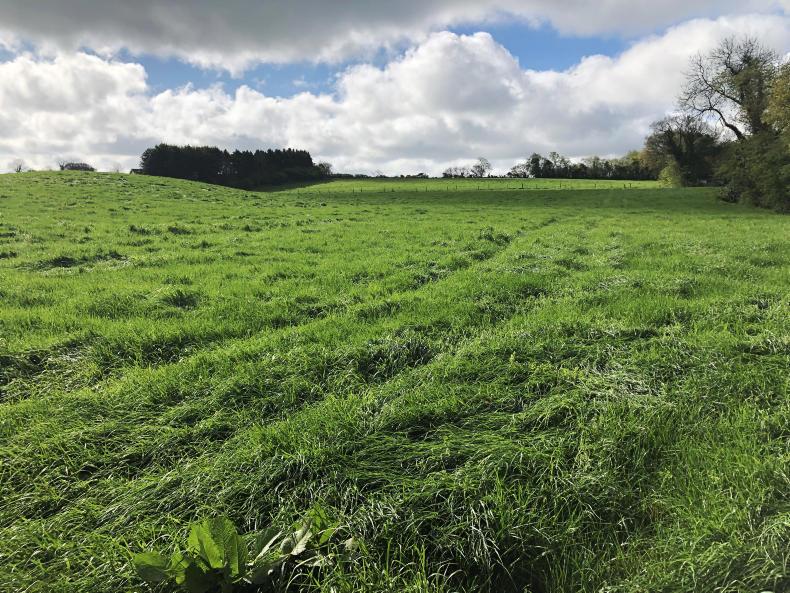Most moderately- to well-stocked farms have at least two and possibly three rounds of fertiliser out by now. Based on stocking rate (kg/ha organic N), Table 1 shows how much N should have been applied to grassland swards by the end of April.
Many will have spread a round in each month, starting off with urea and then switching to either CAN or a compound like 18:6:12, depending on soil phosphorous (P) and potassium (K) status.
To get your head around the kg/ha organic N value, look at Table 2. For example, two suckler cows and two calves per hectare would give a stocking rate of 178kg/ha organic N (2.4LU/ha).
A heavier stocking rate of 3.3LU/ha on the grazing ground (three suckler cows and three calves) is right up at the 250kg/ha organic N mark.
Mid-season N
Table 3 now adds to the spring N requirement for grassland shown in Table 1 and details the mid-season N requirements of grass swards.
Looking at Table 3, moderately stocked farms should aim to spread just under 70kg/ha (56 units/ac) of N across May, June and July. Over this period, at least three grazing rotations should occur, so following two of the three rotations with N will be necessary.
Higher-stocked farms should be looking at getting around 100kg/ha (85 units/ac) of N out over the next three months. This will be close to an application of N after each grazing rotation.
Sources of N will include organic fertiliser (slurry) or chemical fertiliser. N volumes in slurry spread in summer are less than that of slurry spread in spring. Every 1,000gal/ac of cattle slurry will provide three to six units of N depending on level of dilution and method of spreading. Added water will lower the N level while low emission slurry spreading increases the N uptake.
After organic N, the balance will come through chemical N. A bag of CAN (27% N) per acre is ideal to meet the monthly targets outlined in Table 3. However, depending on soil indexes, if P and K needs building then compounds such as 18:6:12 should be used.






 This is a subscriber-only article
This is a subscriber-only article










SHARING OPTIONS: